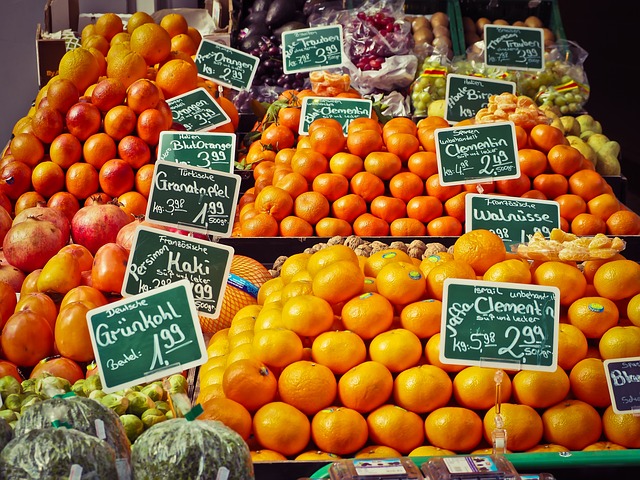Yard waste removal and composting are pivotal ecological practices that transform garden-derived organic materials like leaves, grass clippings, and kitchen scraps into nutrient-rich compost, which enriches soil health and reduces reliance on synthetic fertilizers. This process is accessible for homeowners, who can select appropriate compost bins or piles, maintaining a balanced mix of 'greens' and 'browns' to support a thriving microbial ecosystem necessary for effective decomposition. Regular turning of the compost introduces oxygen, stimulating microbial activity and expediting the breakdown of organic matter into high-quality compost that benefits garden growth and contributes to broader environmental sustainability by diverting waste from landfills. Advanced composting techniques include maintaining an optimal carbon-to-nitrogen ratio, regulating temperature for hot composting, and introducing composting worms to aid in the process. Yard waste removal and recycling through composting not only optimize garden soil fertility but also support biodiversity and sustainable waste management practices, underscoring their importance in promoting a healthy environment.
Explore the transformative power of compost creation for garden enthusiasts. This article delves into the benefits of yard waste removal and composting as a sustainable practice, enhancing soil health and fostering a thriving garden ecosystem. We’ll guide you through the essentials of composting organic materials from your yard, including how to select and prepare an ideal compost bin or pile, thereby contributing to effective yard waste recycling. Learn the nuances of monitoring and maintaining your compost for optimal results. Additionally, discover advanced compost techniques to accelerate decomposition and refine your composting skills, all while promoting eco-friendly practices in your gardening endeavors.
- Maximizing Your Garden's Health: The Role of Yard Waste Removal and Compost Creation
- Understanding the Basics of Composting Organic Materials from Your Yard
- Selection and Preparation of the Ideal Compost Bin or Pile for Yard Waste Recycling
- Monitoring and Maintaining Your Compost: Tips for Garden Enthusiasts
- Advanced Compost Techniques: Aerating, Balancing, and Accelerating Decomposition Processes
Maximizing Your Garden's Health: The Role of Yard Waste Removal and Compost Creation

Yard waste, often overlooked as mere garden detritus, holds immense value for enhancing soil health and fertility. By engaging in yard waste removal and compost creation, garden enthusiasts can transform organic matter such as leaves, grass clippings, and pruned branches into nutrient-rich compost. This process not only diverts waste from landfills but also enriches the soil, promoting plant growth and reducing the need for chemical fertilizers. The act of composting is a form of recycling that returns essential nutrients to the earth, creating a sustainable cycle within your garden ecosystem.
Effective yard waste removal begins with proper segregation and collection of organic materials. These can be composted rather than discarded, thereby minimizing the environmental impact of yard maintenance. Compost creation involves balancing green (nitrogen-rich) and brown (carbon-rich) materials to accelerate decomposition while avoiding odors and pests. Regular turning of the compost pile oxygenates the material, aiding microbial activity that breaks down organic matter more efficiently. This not only speeds up the composting process but also ensures that the resulting compost is of high quality, ready to enhance the structure and fertility of your garden soil. Embracing yard waste removal and compost creation is a proactive step towards maintaining a healthy, vibrant garden, with benefits extending far beyond the immediate surroundings.
Understanding the Basics of Composting Organic Materials from Your Yard

Yard waste removal and recycling through composting is an environmentally friendly practice that transforms organic materials from your garden into nutrient-rich compost, which can enhance soil health and reduce the need for chemical fertilizers. To begin composting, it’s essential to identify suitable organic materials found in most gardens. These typically include grass clippings, fallen leaves, fruit and vegetable scraps, and plant trimmings. By understanding the basics of composting, garden enthusiasts can effectively recycle these materials into a valuable resource for their gardens.
Creating a compost pile or bin involves selecting a convenient location in your yard that is well-drained but not in a low-lying area prone to standing water. Start by layering your yard waste with a mix of ‘greens’ (nitrogen-rich materials like fresh grass clippings and fruit and vegetable peels) and ‘browns’ (carbon-rich materials such as dried leaves, straw, and shredded paper). These layers help maintain an optimal balance of microorganisms that break down the organic matter. Regularly turning the compost pile or mixing the contents of your bin will accelerate the decomposition process and ensure a well-balanced compost. Yard waste removal and recycling through composting not only benefits your garden but also contributes to the health of the ecosystem by reducing landfill waste and promoting biodiversity.
Selection and Preparation of the Ideal Compost Bin or Pile for Yard Waste Recycling

When embarking on the journey of compost creation for garden enthusiasts, selecting the right compost bin or pile is crucial for efficient yard waste removal and recycling. The ideal compost system should accommodate the volume of your organic waste and fit comfortably within your available space. Bins come in various shapes, sizes, and materials, from traditional stackable bins to enclosed tumblers, each with its own advantages. A bin’s design can affect aeration, moisture retention, and overall compost quality, influencing the decomposition process.
For those with ample space, a three-bin system allows for separate composting of greens, browns, and finished compost, facilitating an optimized carbon-to-nitrogen ratio and easier management. Location is also key; your compost should be accessible yet out of direct sunlight or heavy rain to prevent drying out or waterlogging. Proper preparation involves ensuring a balanced mix of materials, with greens providing nitrogen and browns offering carbon. Kitchen scraps can be added to speed up the process, while larger yard waste like leaves and branches can provide structural components for the compost pile. Regular turning and monitoring will maintain aeration and moisture levels, accelerating the transformation of your yard waste into valuable, nutrient-rich compost for your garden. This not only aids in recycling organic matter but also contributes to healthier soil and vibrant plant growth, making it a sustainable practice for any gardener.
Monitoring and Maintaining Your Compost: Tips for Garden Enthusiasts

Garden enthusiasts who are committed to sustainable practices can effectively manage their compost by closely monitoring and maintaining it. A well-managed compost pile not only accelerates the decomposition process but also ensures that yard waste is recycled into nutrient-rich soil amendments. Regularly inspecting your compost for moisture levels, temperature, and aeration will facilitate a balanced and efficient composting environment. Ensure that your compost has an optimal balance of green and brown materials to maintain the necessary levels of nitrogen and carbon. Green materials, such as kitchen scraps and grass clippings, add nitrogen, while brown materials, like dried leaves and twigs, contribute carbon. Adjusting these ratios will prevent the compost from becoming too wet or too dry, both of which can impede decomposition.
Turning the compost regularly is crucial for aeration, which helps beneficial microorganisms thrive. These microorganisms are responsible for breaking down organic matter. Additionally, by fluffing the compost, you encourage even decomposition and help prevent the formation of large, compacted clumps that can hinder the composting process. Yard waste removal and recycling practices are integral to maintaining a healthy compost system. Composting not only reduces the amount of waste sent to landfills but also returns valuable nutrients back into your garden. By actively managing your compost, you contribute to a sustainable cycle that benefits both your garden and the environment. Keeping a compost bin or pile in your yard is an excellent way to recycle organic waste and create a rich, humus-like material that enhances soil fertility and structure.
Advanced Compost Techniques: Aerating, Balancing, and Accelerating Decomposition Processes

Garden enthusiasts committed to sustainable practices often turn to composting as a means to recycle yard waste, thereby enriching their soil and promoting plant health. Advanced compost techniques play a crucial role in optimizing the decomposition process. Aeration is one such technique that enhances compost’s oxygen levels, which is vital for the microbial activity that breaks down organic matter. To aerate effectively, one can use tools like a compost aerator or simply turn the pile with a shovel to introduce air. Balancing the carbon-to-nitrogen ratio is another essential aspect of advanced composting. A balance of about 30 parts carbon to one part nitrogen supports microbial growth and decomposition efficiency. Yard waste, such as dried leaves and grass clippings, can be rich sources of carbon, while kitchen scraps provide nitrogen. For those looking to accelerate the decomposition process, incorporating composting worms or hot-composting methods can significantly speed up the transformation of yard waste into nutrient-rich compost. Hot-composting involves maintaining a high temperature within the pile to kill pathogens and weed seeds, which also speeds up the decomposition process. Regular monitoring of temperature can guide these acceleration techniques, ensuring that the composting process is progressing as intended and that yard waste removal and recycling are contributing to a healthier garden ecosystem. These advanced composting practices not only improve the quality of the final compost but also contribute to environmental sustainability by reducing landfill use and promoting a closed-loop system in which organic matter is transformed into valuable soil amendments.
Gardening enthusiasts looking to enrich their gardens naturally can attest to the significance of compost creation as a sustainable practice for yard waste removal and recycling. By understanding the basics of composting organic materials from your yard, selecting an ideal compost bin or pile, and actively monitoring and maintaining this compost, gardeners can significantly contribute to soil health and reduce environmental impact. For those ready to delve deeper, advanced techniques in aerating, balancing, and accelerating decomposition processes further enhance the efficiency of yard waste recycling. Embracing these practices not only fosters a thriving garden ecosystem but also reflects a commitment to ecological stewardship.
